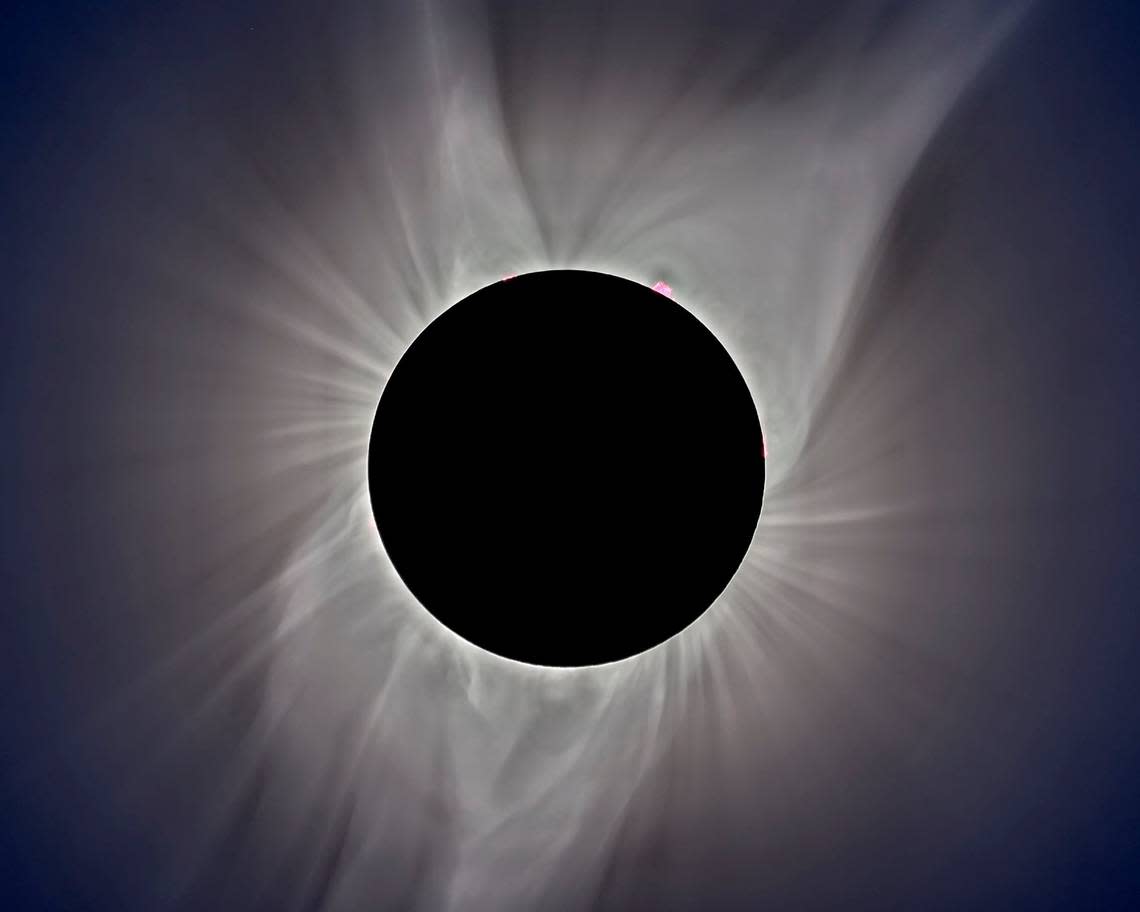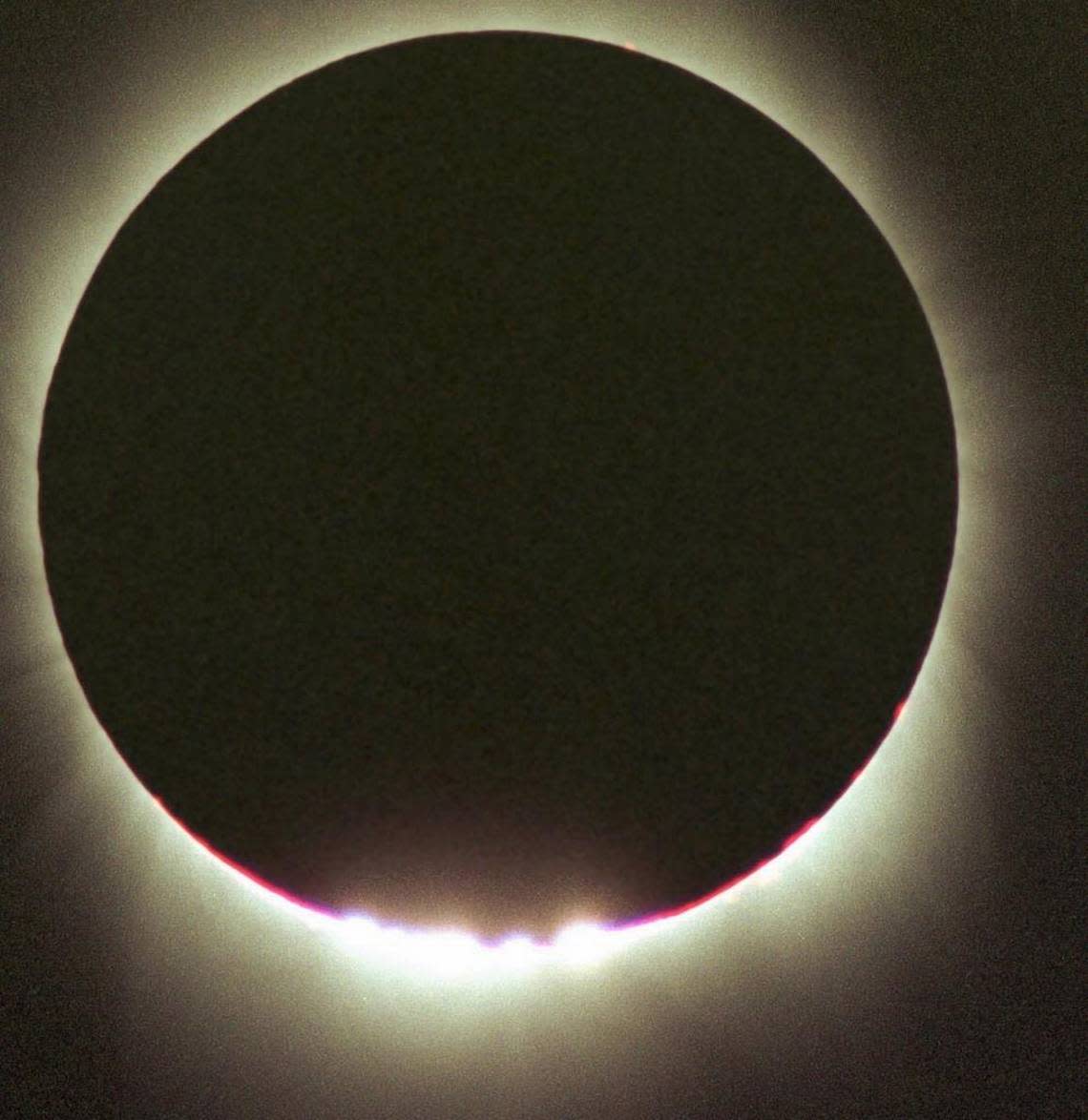Today’s eclipse is No. 6 for this NC space geek, who’s followed the sun around the world
In the past 54 years, Johnny Horne has watched the moon block out the sun five times on three continents, aiming his camera at the sky from his boyhood backyard, from the rocking deck of a Caribbean cruise ship and once from an African farm known for puff adders.
And in about six hours, barring clouds, he’ll witness total eclipse again from the Texas Hill Country — a boundless thrill for the lifelong star-watcher who made his own telescope at 16, who built his own domed observatory in that same backyard and whose idea of fun in retirement is photographing the International Space Station as it crosses the moon.
From his house in Stedman, pop. 1,028, Horne thrills at every celestial happening from a passing comet to a SpaceX launch. But no heavenly occurrence beats a total eclipse — the sky’s greatest trick.
Total eclipse as Super Bowl
“They’re the top,” he said Friday from his hotel in Austin. “They’re the Super Bowl. There’s really nothing quite like them. It’s not something you can really capture in a picture, although I’m going to try.”

I know Johnny Horne from The Fayetteville Observer, where I worked as a reporter in the late ‘90s and he spent decades as the photo editor. Even after a long day chronicling the day’s mayhem in “Fayettenam,” he would set up a telescope in the parking lot and offer everybody a peek at Saturn on their way home.
If you’ve ever been to Stedman, about 10 miles east of Fayetteville, you’ll appreciate the charming oddity of Horne’s observatory as a town landmark. In 1997, I wrote about Stedman getting a new stoplight — its first ever. A year later, I did a ride-along with a Stedman police officer — the only one in town.
From earliest to oldest space geek
But Horne’s gaze traveled clear to the Cone Nebula. From his backyard, his eye has wandered thousands of light years away, and the pictures he brings back have graced the cover of Sky & Telescope. He often tells the story of the first-ever photograph he took as a boy: a shot of the moon.
“I was one of the earliest geeks,” Horne told the Observer in 2016. “Now I’m one of the oldest.”

He logs his eclipse viewings like Grateful Dead shows or NCAA Tournament games, recalling all the details:
▪ First eclipse, Stedman, 1970: “That was over my backyard. It lasted two minutes, but the clouds obscured it half that time. It got dark and the temperature dropped.”
▪ Second eclipse, Cabo San Lucas, 1991: “That one lasted 6 and a half minutes, and 7 and a half is the longest possible.”
▪ Third eclipse, off the coast of Aruba, 1998: “There was a gentle roll to the ship that lasted 45 seconds. I prefer dry land.”
▪ Fourth eclipse, near Lusaka in Zambia, 2001: “We were on a dairy farm, and the farmer had gone and shooed all the puff adders away.”
▪ Fifth eclipse, Silverton, Ore., 2017: “We camped out. No clouds and 70 degrees.”

And on Monday, when the heavenly bodies align once more, and the moon glares down like the pupil from an angry eye, the most appreciative spectator will stare back and click the shutter he’s clicked all his life, witnessing space fly past.
Here’s a guide for viewing Monday’s eclipse in the Triangle, which will be less spectacular than what devotees like Johnny Horne see, but still a grand astronomical show
Uniquely NC is a News & Observer subscriber collection of moments, landmarks and personalities that define the uniqueness (and pride) of why we live in the Triangle and North Carolina.
Here’s when to watch the eclipse in Raleigh on Monday: Check out our graphic
